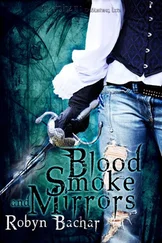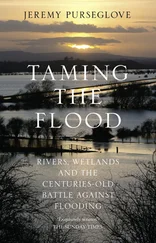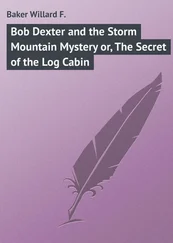* Once at the water’s edge, stop and peer into the water to get an idea of what sort of animals you might catch. You may even be able to gently catch an individual there and then without causing too much disturbance.
* Only once you have assessed the habitat is it time to dip your net – gently and carefully. Keep water flowing through the net’s mesh. Move it slowly through the water, but not so slowly that even the slowest beetle can swim out the way it came in! A figure-of-eight pattern is perfect.
Handy stuff: making a net
You can buy a purpose-made netand there are many different kinds to choose from, but it is fairly easy to make your own basic one, which will then be useful in most situations.
The two most important ingredients of a netare the netting itself and the wire surround. For the netting, you want something that is white and of a reasonably fine mesh. White is best because with a dark mesh, too many creatures, even the ones with bad eyesight, stand a chance of seeing you coming!
The holes in your netmust be big enough to let the water pass through and drain out easily, but at the same time not so big that all the little creatures get through. It also needs to be robust, otherwise you will forever be replacing the torn bag. I find a tough, coarse cotton fabric is one of the easiest and most practical types of fabric to work with.
Because the wire needs to survive a bit of a bashing,it is best to use a heavy-duty wire that takes a bit of effort to shape. The shape of the net mouth is entirely up to you some people like to have a flat edge, which makes working along the bottom of a pond or river easier. You could otherwise choose to make a circular one.
YOU WILL NEED
> some suitable netting
> needle
> thread
> strong but bendy wire
> wire cutters
> pliers
> bamboo cane
> gaffer tape
1 Decide on the depth of your net. Aim for it being about as deep as it is wide and allow extra fabric to fold over at the top a couple of times. Stitch the turned-down fabric to make a channel. Fold the fabric in half. Stitch along the bottom and up the open side as far as the channel and turn the inside out.
2 Thread the wire through the channel at the top of the bag. For size, you should aim for 20–30cm across. Anything bigger may seem like a better way of catching more, but get a big net full of weed and mud and nobody but Mr Universe would be able to haul the thing in!
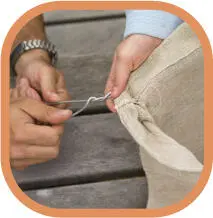
3 Cut off the excess wire so that you are left with 7.5cm sticking out at each end. You might want to ask an adult to help you with this next bit – twist together the ends of wire. Pliers can be helpful.
4 Push them into the end of the bamboo cane and . . .
5 . . . use a good length of gaffer tape to keep the cane in place. Now you’re ready to dip!
Handy stuff for exploring with
A naturalist needs netsand they come in different sizes and styles for different jobs. A stout-framed one with coarse netting is perfect as a pond-dipping net; a lighter one with a delicate mesh is handy for catching winged creatures. A butterfly net is useful for catching . . . well, butterflies!
BinocularsThese are expensive and one of the few things that you cannot make yourself. But they are well worth the investment and there are many prices to meet different purses. They are especially useful for bird watching, but a close focusing pair are brilliant for watching dragonflies.
BucketGreat for the bigger stuff.
Magnifying lensAnother bit of kit that is worth buying. It will turn a mite into a monster.
Plastic pots, trays and plastic aquariumsBrilliant for sorting, separating and observing your catches or collecting your specimens in. The clear ones are even more useful in a watery environment as they let you look at the animals from under the surface. Bags are handy lightweight alternatives to pots; they are also useful for keeping plant specimens fresh.
Sieves and tea strainersThese are very handy for smaller, close-up work and sorting out creatures once you have caught them. Make them even more useful by strapping the handle to a bamboo cane with gaffer tape (see page 8), rather like the yogurt pot on a stick on page 31.
Stout stickI find this useful as an extra leg, especially when wading. You can use it to test the water’s depth or if you are leaning out with your net, a stick is something that you can lean on for support. With a little tape or string, you can construct a makeshift net handle, too.
Wellie bootsOkay, so they aren’t fashionable, but they are a lot cooler than a shoe full of squelchy water or mud.

Puddles
Have you ever left a bucket of water out in the garden or peered into a water butt and noticed it full of wiggly things? Life has appeared as if by magic where before there was none. But this is far from a spontaneous happening. What you have just seen is the wonderfully efficient way that nature has of seeking out and colonizing a new habitat. Even a puddle, assuming it doesn’t just evaporate before things get going, can be home to all manner of weird and exciting life forms.

Try this experiment.It is called Thienemann’s tank and is named after a German scientist who first noticed this phenomena in his garden. Mr Thienemann set out to look at how aquatic invertebrates (that’s to say, those animals without a backbone that live in water) colonize watery habitats. He left a tank of water in his garden and then every now and again checked it for life. Over eight years he recorded 103 species, which turned up without any aid.
Many species, such as mites and snails,can hitch a lift on others, and some, such as beetles, bugs and dragonflies, all at some stage in their lifetime have wings that enable them to disperse and colonize fresh habitat. But some of Mr Thienemann’s finds were totally aquatic – they could only survive in water. So how did they get there?
If you try Thienemann’s experiment,you will be creating a new habitat. The method is simple – take as big a tank or tub as possible and fill it with water. Then check it every week and record everything you see living in the water. You will almost certainly need the help of a good field guide or even your local museum to help you identify everything.
You must also look very carefullyas some of the creatures will be very small and not at all obvious at first glance. If you have a hand lens or a microscope, this may come in very useful. Try to keep a diary. Draw pictures of anything that arrives and add the date when you noticed it.
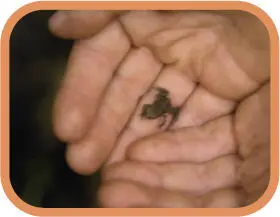
Some amphibians, particularly toads, can breed in surprisingly small puddles of water.
Читать дальше






